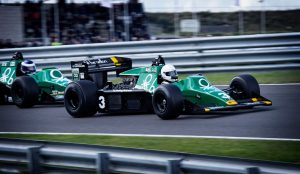Only two temporary courses are currently scheduled for the 2021 season; the bulk of F1 tracks are permanent. Covid has had a significant impact on this season, although it is unlikely that there would be many more street circuits scheduled if Covid had not.
F1 has historically relied on permanent venues, with Monaco being the only temporary track to appear consistently on the schedule. Over the past few years, Monaco, Baku, Melbourne, and Singapore were the only temporary tracks.
These tracks were constructed on common roads that are used as common roads for around nine months of the year. When they are not being utilized or readied for racing, these roads are frequently entirely open to traffic and used by regular people.
Why are most F1 races held on permanent tracks?
The fact that most F1 tracks are permanent is due to a few significant factors. The first is that extensive road closures in cities for three months out of the year were previously quite uncommon, with Monaco being the notable exception.
50 years ago, there were fewer roadways in big cities, which made it much more difficult to close these roads. The fact that ancient tracks like Silverstone and Monza are still part of the circuit shows that F1 developed a heritage of racing on permanent tracks.
It is not surprising that F1 continues to race at many of the same tracks because the sport is founded on tradition. Because there aren’t many permanent, purpose-built tracks available for F1, the sport prefers to use the more accessible temporary street tracks.
How Are Temporary Tracks Created for F1?
Temporary tracks in places like Monaco and Baku use actual city roads. These city streets are turned into a racetrack by Hermann Tilke, the top circuit designer for Formula 1. Thus, these tracks can create amazing turns by using common pieces of roadway.
In Monaco, the grand hotel hairpin is a great illustration of this. In Monaco, the hairpin is one of the bends that requires only minor adjustments and is driveable by anyone when the track is not set up. Of course, quite a few corners do need some adjustments. An exciting and thrilling track can be made by using artificial, temporary walls.
Will Formula One Ever Use More Temporary Tracks?
There is a significant likelihood that temporary tracks or street circuits will start to appear more frequently. The schedule for the upcoming season includes two new temporary tracks in well-known locales.
One of the street circuits for the new phase of Grand Prix events, located in sizable cities, is the Miami Grand Prix. These are intended to draw in a sizable number of clients. Over the past 30 years, there’s a huge increase in the number of people relocating to cities around the world.
This is not ideal for F1, as many of their tracks are miles away from settlements or urban areas. This is the reason why F1 wants to bring racing to more fans’ front doors. This problem can be fixed by having more street races on temporary circuits. When races are easier to get to, it’s much easier for people who aren’t big F1 fans to go to them.




